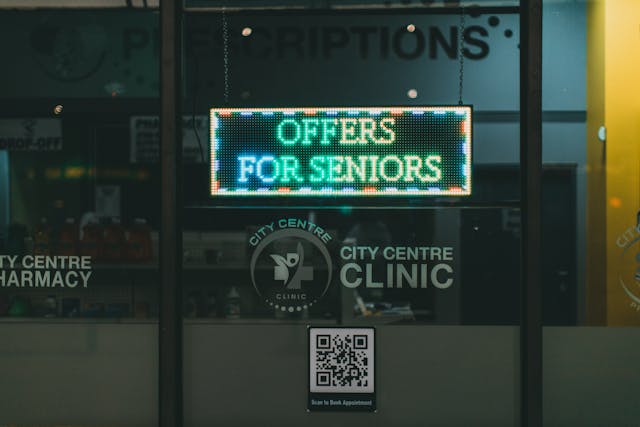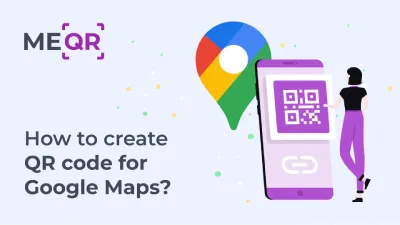QR Codes Printing Guidelines: Ultimate Tips for Perfect Results
To create a QR code for a link, video or picture - click on the button below.

Quick Response (QR) codes represent a technological bridge, seamlessly connecting the physical to the digital. These compact and versatile two-dimensional barcodes can be scanned using a smartphone camera, directing users to specific URLs, audio, and a variety of interactive online resources.
This guide delves deeply into the importance of printing QR codes, highlighting their strategic uses across multiple sectors, and providing comprehensive guidelines for this purpose.
Why Print a QR Code?
QR codes are integral in modern digital communication strategies, serving multifaceted roles that include but are not limited to:

- Marketing and Advertising: QR codes are powerful tools in advertising campaigns, allowing brands to connect with consumers directly by linking to special offers, product details, and interactive content that enhances the consumer experience.
- Educational Resources: In educational settings, QR codes provide immediate access to academic articles, educational videos, and interactive learning tools that enhance the educational experience.
- Event Engagement: For events, QR codes are used to facilitate seamless check-ins, provide event information, maps, and schedules directly on attendees' smartphones.
- Customer Service: QR codes improve customer service by providing quick access to troubleshooting guides, contact information, and direct customer support channels.
- Health and Safety Information: Especially relevant in public health contexts, QR codes can direct individuals to health resources, safety guidelines, and critical updates in real-time.
These applications underscore the versatility and utility of QR codes, making them an essential component of effective digital communication strategies.
Who Needs to Print QR Codes?
The utility of QR codes spans various sectors, each leveraging this technology to enhance operational effectiveness and user engagement. Key industries and their uses include:
-
Retailers: Stores use QR codes to bridge the gap between in-store experiences and online commerce platforms. They can be found on product tags, checkout counters, and in strategic locations around stores to offer links to Google Review, payment, and loyalty SMS.
-
Healthcare Facilities: Clinics and hospitals implement QR codes to streamline patient care processes, from registration to accessing personal health records and facilitating the secure transfer of medical data.
-
Educational Institutions: Schools and universities integrate QR codes into educational materials and around campuses to provide students and faculty with quick access to learning resources and institutional information.
-
Hospitality and Tourism Operators: Hotels and restaurants use QR codes to enhance visitor experiences by providing travel information, ticketing, and access to interactive tours.
-
Government Services: Deploy QR codes to improve accessibility to public services, documentation, and civic engagement opportunities.

Each of these sectors benefits from printed QR codes by streamlining access to information and enhancing user interaction.
When Did Printing a QR Code Become Popular?
Although developed in 1994 for tracking vehicle parts, QR codes gained widespread popularity with the advent of smartphones that could easily decode them. This popularity was significantly bolstered by several key developments:

-
Early 2010s Technological Integration: As smartphone usage increased, businesses recognized QR codes as an efficient tool to bridge offline and online marketing.
-
COVID-19 Pandemic: The pandemic underscored the value of QR codes, propelling their use to new heights as businesses, institutions, and individuals sought contactless ways to share information and facilitate transactions.
-
Ongoing Digital Transformation: The continuing shift towards digital solutions in everyday interactions ensures the relevance and utility of QR codes are maintained across industries.
These milestones highlight the evolutionary journey of QR codes from a niche technology to a mainstream tool widely adopted across various sectors.
What Can QR Codes Be Printed On?
The material and method used for QR code printing significantly impact their effectiveness and longevity. QR codes can be effectively printed on a variety of materials, each offering different benefits depending on the use case. Key materials include:
How to Print QR Code on Metal?
Metal surfaces are ideal for QR codes in industrial and outdoor environments due to their durability. Techniques such as laser etching and anodic printing are used to ensure that the QR code withstands harsh conditions and remains scannable for extended periods.
Metal surfaces offer robust and long-lasting solutions for QR codes, particularly in challenging environments where durability is paramount. Here are some detailed considerations for printing QR codes on metal:
-
Laser Etching: This method uses a laser to engrave the QR code onto the metal surface. It is highly precise and can produce durable, long-lasting QR codes that resist fading and wear.
-
Anodic Printing: This technique involves printing the QR code onto an anodized aluminum surface. The anodizing process increases the durability and scratch resistance of the metal, ensuring the QR code remains readable over time.
-
Durability Testing: Before finalizing the production process, it's crucial to test the QR codes under various environmental conditions, such as exposure to sunlight, moisture, and physical abrasion, to ensure they maintain their functionality.
By following these detailed steps, you can print QR code on metal and ensure its surfaces are both durable and effective.

How to Print QR Codes on Paper?
Paper remains the most common medium for QR codes due to its accessibility and cost-effectiveness. The key to printing on paper includes selecting high-contrast colors and ensuring that the print quality is high enough to prevent blurring, which could render the QR code unscannable. Here are the steps to ensure effective printing on paper:

-
Choose the Right Software: Utilize the QR code generator that offers customization options and high-resolution outputs.
-
Select Quality Paper: Ensure that the paper quality is suitable for the intended use, whether for flyers, brochures, or business cards. Glossy or matte finishes can impact the visibility and durability of the QR code.
-
High-Contrast Colors: Select ink colors that provide a sharp contrast between the QR code and the background paper to ensure optimal scannability.
-
Printer Calibration: Regularly calibrate your printer to ensure it produces high-quality prints with sharp details and consistent colors.
-
Test Scannability: Before mass printing, test the QR code on various devices to ensure it scans correctly and leads to the intended content.
Following these steps, you can print QR code on paper and ensure it is functional and aesthetically pleasing.
How to Print QR Code on Wood?
Wooden items, often used in artisan or retail settings, can have QR codes printed using techniques like stamping or burning, providing a rustic yet functional appeal. Here are some tips for achieving the best results when printing QR codes on wood:
-
Select Appropriate Wood: Choose a smooth, light-colored wood for better contrast and readability. Woods with minimal grain patterns work best to ensure the QR code remains clear and scannable.
-
Use High-Quality Inks or Engraving Tools: Depending on whether you are printing or engraving, use materials that will create a clear, durable mark. For printing, use ink that adheres well to wood and resists fading. For engraving, use a precise laser engraver to create clean, readable lines.
-
Finishing and Sealing: Apply a clear finish or sealant over the QR code to protect it from wear and environmental factors without obscuring its readability.
-
Test the Output: Always test a sample piece to ensure the QR code is scannable and retains its integrity over time. Testing with different devices and lighting conditions can help identify any potential issues.
Using these methods ensures that QR codes printed on wood are not only visually appealing but also maintain their functionality.

Minimum Print Size for QR Code
Understanding the minimum QR code size for print is crucial to ensure its functionality. It should be large enough to be scanned easily by a smartphone from a reasonable distance. Several factors influence the minimum size requirements:

-
Distance from QR Code Scanner: A QR code meant to be scanned from a distance requires a larger size to maintain readability. For instance, a QR code that will be scanned from 2 meters away should be larger than one scanned from 30 centimeters.
-
Data Complexity: QR codes containing more data need to be larger to accommodate the increased density without compromising scannability. A QR code that encodes a URL is simpler and can be smaller than one that contains vCard information or WiFi credentials.
-
Environmental Conditions: Lighting and surface conditions can affect the ease with which a QR code is scanned, necessitating adjustments in size. Codes placed in dim or highly reflective environments may need to be larger to ensure readability.
-
Device Variability: Different smartphones and scanning apps have varying levels of sensitivity. Ensuring the QR code is large enough to be read by a range of devices can help avoid user frustration.
Typically, a 1x1 inch QR code is sufficient for most scanning scenarios, but adjustments may be necessary based on these factors. For more complex or critical applications, larger sizes or additional error correction levels may be required.
How to Print QR Codes?
Different applications and environments necessitate various QR code formats, offering flexibility in their use. Here are several methods and their specific considerations:
How to Print QR Code Stickers?
Printing QR code stickers is a flexible and portable option, suitable for temporary placements or promotional events. Important considerations include:
-
Design Customization: Match the sticker design with the brand or campaign aesthetics. Ensure the QR code is prominently displayed and not obscured by other design elements.
-
Printer Technology: Use high-quality printers that can handle detailed outputs and produce durable stickers. Inkjet and laser printers both offer suitable options, depending on the material of the stickers.
-
Material Selection: Choose waterproof and tear-resistant materials for outdoor use. Vinyl stickers are a popular choice due to their durability and weather resistance.
-
Adhesive Quality: Ensure the adhesive used on the stickers is appropriate for the surface and environment where they will be applied. Removable adhesives are useful for temporary applications, while permanent adhesives offer more durability.
-
Batch Testing: Print a small batch of stickers and test them in their intended environment to ensure they adhere properly and remain scannable over time.
By focusing on these aspects, you can print QR code stickers that serve their intended purpose in various settings.

How to Print QR Codes on Labels?
Printing QR codes on labels is crucial in manufacturing and logistics, where they facilitate inventory management, tracking, and quality control processes. Steps to ensure successful printing on labels include:

-
Material Choice: Select durable label materials that can withstand handling and environmental exposure. Polyester and polypropylene labels offer excellent durability and resistance to moisture, chemicals, and abrasion.
-
Printer Recommendations: Use printers specifically designed for label printing to ensure high-quality outputs. Thermal transfer printers are often preferred for their durability and resistance to smudging.
-
Label Design: Ensure the QR code is placed in a location that is easily accessible for scanning. Include a margin around the QR code to prevent any design elements from interfering with its readability.
-
Testing and Validation: Test the labels under different conditions to ensure they remain scannable throughout their lifecycle. This includes exposure to temperature variations, humidity, and physical handling.
-
Batch Printing: When printing large quantities, periodically check the output quality to ensure consistency and readability of the QR codes.
These steps ensure that QR code labels are reliable and effective in their applications.
How to Print QR Codes on Business Cards?
Printing QR codes on business cards allows for a dynamic element, linking directly to professional profiles or websites. To effectively integrate QR codes into business cards:
-
Design Balance: Ensure the QR code is integrated into the card design without overwhelming the other information. Place the QR code in a corner or on the back of the card to maintain a clean and professional appearance.
-
High-Resolution Printing: Use high-quality printers to ensure the QR code is clear and scannable. Offset printing or digital printing techniques are suitable for producing sharp, detailed QR codes.
-
Functionality Testing: Test the QR code on various devices to confirm it works as intended. Ensure the QR code leads to an appropriate landing page, such as a digital business card, LinkedIn profile, or company website.
-
Material Choice: Select business card materials that enhance the overall look and feel of the card while ensuring the QR code remains scannable. Matte finishes often work better than glossy finishes, which can create glare.
-
Consistency in Branding: Ensure the QR code complements the overall branding of the business card, including color schemes and design elements.
Following these guidelines ensures that your business cards are both professional and functional.

How to Print QR Code for WiFi?
Printing QR codes for WiFi access is increasingly popular in hospitality and retail, providing a secure and convenient method for guests to connect to the internet. To create effective WiFi QR codes:

-
Use a Secure Generator: Ensure that the QR code generator encrypts the network details to prevent unauthorized access. Tools like WiFi QR Code Generator provide secure options for creating these codes.
-
Print Clearly: Ensure the QR code is printed clearly and positioned in easily accessible areas, such as near the entrance or reception area. Consider placing the QR code on a tent card or a small frame for easy visibility.
-
Test Connectivity: Verify that the QR code works with various devices to ensure a smooth user experience. Test the QR code with different smartphones and tablets to ensure compatibility.
-
Display Instructions: Include a brief instruction on how to scan the QR code and connect to the WiFi network, especially if the code is placed in a public area.
-
Periodic Updates: Regularly update the QR code if the WiFi network details change to ensure continued access for users.
By adhering to these practices, you can provide a convenient and secure method for guests to access WiFi.
Recommended Print QR Code Generator
Using a robust tool like ME-QR to generate QR codes allows for customization and integration of various features, from basic URL encoding to advanced image embedding. Key features of ME-QR include:
-
Customization Options: Ability to embed logos, change color schemes, and include various data forms. Customizing QR codes with brand colors and logos can enhance brand recognition and aesthetics.
-
High-Quality Outputs: Ensure that the generated QR codes are of high resolution and scannable. High-quality QR codes reduce scanning errors and improve user experience.
-
User-Friendly Interface: Simplifies the process of creating and managing QR codes. An intuitive interface allows users to generate QR codes quickly without needing technical expertise.
-
Analytics and Tracking: Some QR code generators, including ME-QR, offer analytics to track the performance of your QR codes. This data can provide insights into user engagement and the effectiveness of your campaigns.
-
Secure Data Management: Ensure the generator provides secure options for managing sensitive data, especially for QR codes that encode personal or confidential information.
These features make ME-QR an excellent choice for generating versatile and effective QR codes.

Create
QR Code Now!
Put your QR code link, add name for your QR, select content category and generate!
Create
QR Code Now!
Put your QR code link, add name for your QR,
select content category and generate!

Why is My QR Code Not Printing?
Problems in printing QR codes can arise from various issues, including poor resolution, insufficient contrast, and incorrect sizing. Common troubleshooting tips include:






Conclusion
QR codes are a dynamic and powerful tool in bridging the gap between physical and digital spaces. Proper implementation and printing of QR codes are crucial in maximizing their effectiveness, ensuring that they serve their intended purpose whether for marketing, information dissemination, or operational efficiency.
By following our QR code printing guidelines, you can effectively utilize QR codes to enhance user engagement, streamline operations, and provide seamless access to digital content. Whether for business, education, healthcare, or personal use, QR codes offer a versatile and efficient solution for connecting with your audience in meaningful ways.






























